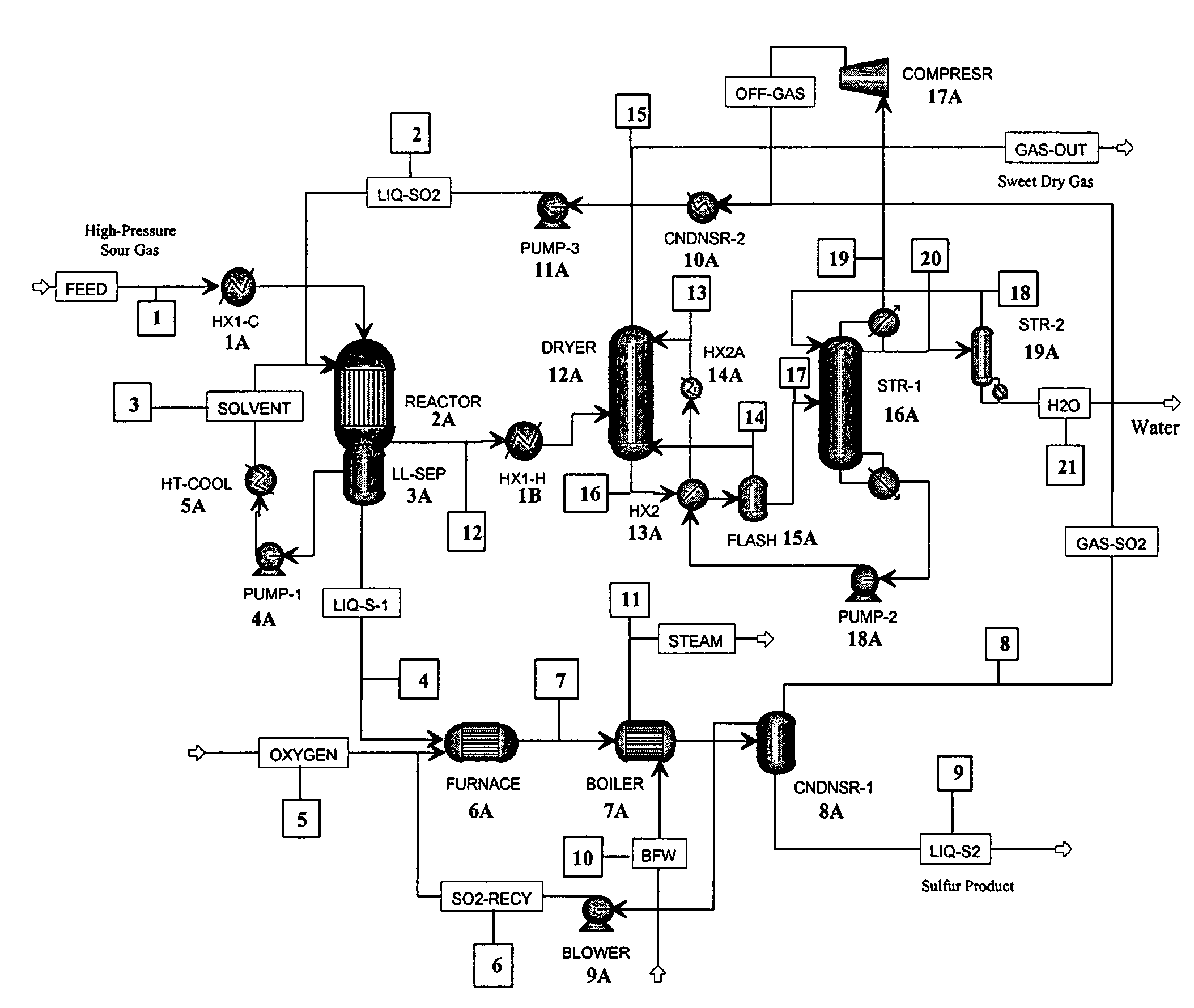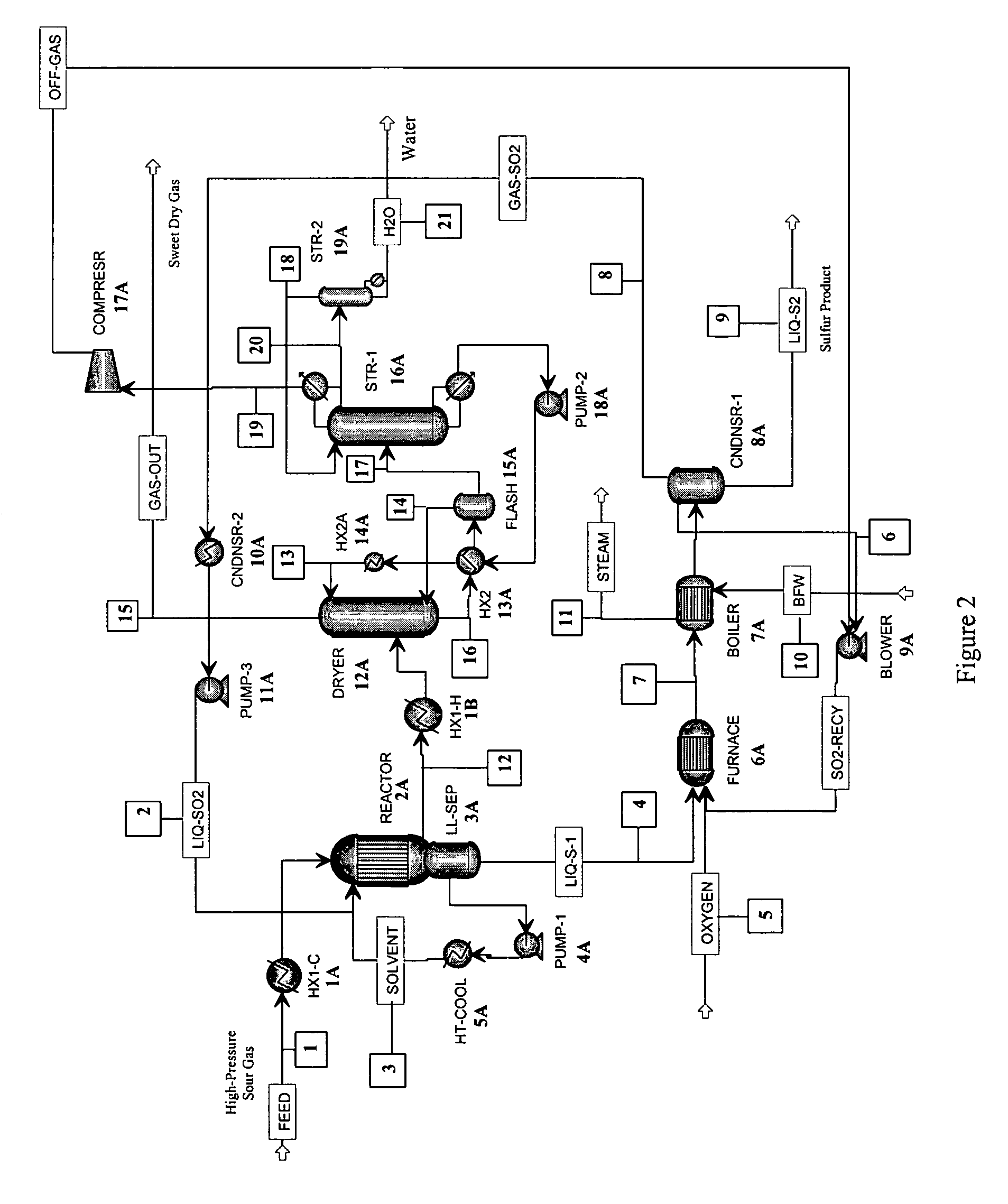Process for sulfur removal suitable for treating high-pressure gas streams
a technology of high-pressure gas and sulfur removal, which is applied in the direction of sulfur compounds, sulfur preparation/purification, and separation processes, etc., can solve the problems of not meeting today's strict environmental standards, regenerating glycol, and needing to cool sulfur-saturated,
- Summary
- Abstract
- Description
- Claims
- Application Information
AI Technical Summary
Benefits of technology
Problems solved by technology
Method used
Image
Examples
Embodiment Construction
[0036]As stated above, in one aspect, the invention herein comprises a process for removing H2S from a gas containing it, comprising:[0037](a) reacting an H2S-containing gas stream with a stoichiometric excess of SO2 in a reactor to produce an SO2-containing gas and liquid sulfur,[0038]the reaction being conducted in an organic liquid solvent containing a homogeneous catalyst that promotes the reaction
2H2S+SO23S+2H2O[0039]at a temperature in the reactor that is above the melting point of sulfur;[0040](b) withdrawing liquid sulfur from the reactor;[0041](c) withdrawing the SO2-containing gas of step (a) from the reactor;[0042](d) removing SO2 from the gas of step (c) to produce a substantially H2S- and SO2-free gas, and[0043](e) recycling the SO2 removed in step (d) to step (a).
[0044]In the first step of the process, an H2S-containing gas stream is reacted with a stoichiometric excess of SO2 in a reactor to produce elemental sulfur and a gas that contains SO2, together with water, an...
PUM
| Property | Measurement | Unit |
|---|---|---|
| pressure | aaaaa | aaaaa |
| pressure | aaaaa | aaaaa |
| temperature | aaaaa | aaaaa |
Abstract
Description
Claims
Application Information
 Login to View More
Login to View More - R&D
- Intellectual Property
- Life Sciences
- Materials
- Tech Scout
- Unparalleled Data Quality
- Higher Quality Content
- 60% Fewer Hallucinations
Browse by: Latest US Patents, China's latest patents, Technical Efficacy Thesaurus, Application Domain, Technology Topic, Popular Technical Reports.
© 2025 PatSnap. All rights reserved.Legal|Privacy policy|Modern Slavery Act Transparency Statement|Sitemap|About US| Contact US: help@patsnap.com



